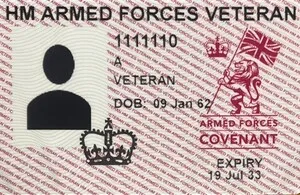Table of Contents
For many veterans, transitioning from military to civilian life presents new challenges. The loss of structure, high-pressure environments, and camaraderie can leave many feeling anxious, isolated, or uncertain. The resilience built in service doesn’t always translate to daily life, and without the right tools, anxiety can take hold.
As a former Royal Navy diver, I know this first-hand. In extreme environments, I learned to stay calm under pressure, but I also bottled up emotions. I thought ignoring them made me stronger—but over time, anxiety crept in. It took years to realise that true resilience isn’t about shutting down emotions—it’s about processing them and growing stronger in the process.
Here are some key strategies that have helped me manage anxiety and build resilience.
1. Accept Anxiety as a Natural Response
Anxiety is not weakness—it’s the brain’s way of responding to uncertainty and potential threats. In the military, we were trained to anticipate risks and react accordingly, but in civilian life, we often internalise stress rather than deal with it head-on.
Instead of fighting anxiety, try to observe it without judgment:
- What triggered it?
- Where do you feel it in your body?
- What thoughts are repeating in your head?
This simple act of self-awareness can take away some of anxiety’s power, helping you feel more in control.
2. Control What You Can, Let Go of What You Can’t
Military life provided structure and predictability. Civilian life, on the other hand, can feel chaotic and out of control, which fuels anxiety. The key is to differentiate between what you can control and what you can’t.
- What you can control: Your routine, your reactions, your mindset, your physical health.
- What you can’t control: Other people’s actions, the economy, world events.
Focusing on what you can influence reduces stress and builds mental resilience.
3. Get Out of Your Head and Into Your Body
Anxiety thrives when we stay stuck in our thoughts. Engaging the body can disrupt the cycle:
- Exercise: Whether it’s lifting weights, running, or even walking, movement burns off excess stress hormones.
- Cold Showers or Ice Baths: Activates the vagus nerve, which calms the nervous system.
- Box Breathing:
- Inhale for 4 seconds
- Hold for 4 seconds
- Exhale for 4 seconds
- Hold for 4 seconds
- Repeat until calm.
These techniques help shift your focus from anxious thoughts to present-moment awareness.
4. Reframe Negative Thoughts
Anxiety often comes from the stories we tell ourselves—self-doubt, worst-case scenarios, or reliving past failures. Cognitive reframing helps shift negative thought patterns into more constructive ones.
Example:
🚫 “I’m failing at this new career. I’ll never be as good at this as I was in the military.”
✅ “This is a transition period. Just like I trained for my role in service, I’m learning new skills now.”
Reframing doesn’t ignore reality, but helps you choose a perspective that serves you rather than limits you.
5. Express, Don’t Suppress – The Power of Journaling
For years, I struggled to express my emotions, always feeling the need to “tough it out”. Then I discovered journalling, and everything changed.
Writing things down helps:
- Process emotions instead of bottling them up.
- Identify patterns in your anxiety triggers.
- Shift your mindset by focusing on solutions instead of problems.
This is exactly why I created Combat Journal—a structured journal designed to help veterans and individuals build resilience, process emotions, and develop a growth mindset. Unlike traditional self-help books, Combat Journal provides guided exercises based on proven psychotherapy methods to help you take control of your mental well-being.
If you’re struggling with anxiety, stress, or feeling stuck, journaling is a game-changer. Even just 5 minutes a day can make a huge difference.
Final Thoughts: Resilience is Built, Not Given
If you take one thing away from this, let it be this: resilience isn’t about avoiding struggle—it’s about learning how to navigate it.
Anxiety is a challenge, but it’s also an opportunity—to grow stronger, develop self-awareness, and take control of your mindset. The strategies above aren’t quick fixes, but with consistent practice, they can help you build long-term resilience and live with greater confidence and clarity.
If you’re ready to start taking charge of your mental well-being, I encourage you to give Combat Journal a try. You can find out more at combat-journal.com.
You’re not alone in this. Stay strong, keep moving forward, and remember—you’ve faced challenges before, and you’ll overcome this too.









